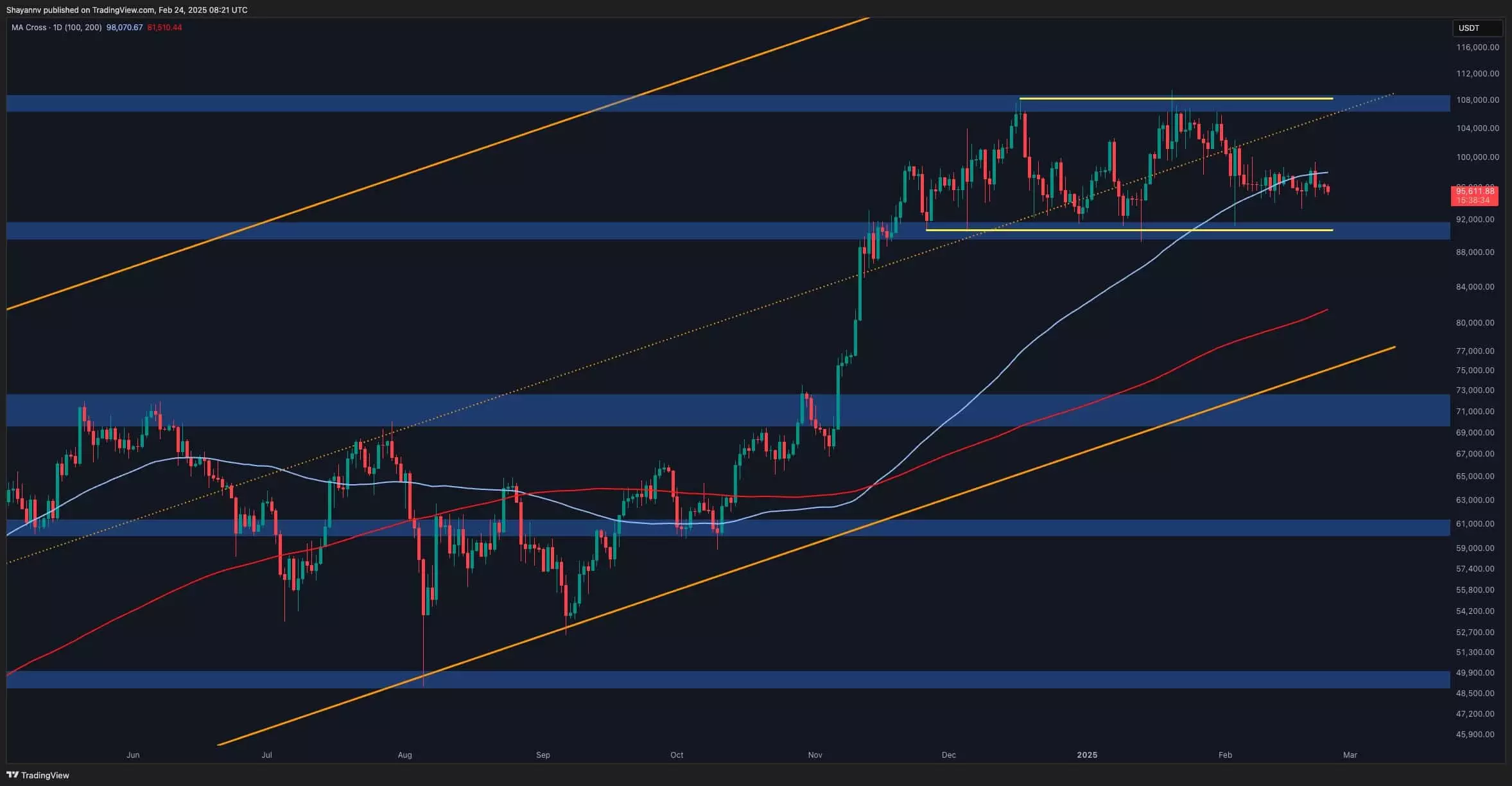As Bitcoin finds itself below the pivotal 100-day moving average, currently hovering around $98,000, the cryptocurrency stands at a significant juncture. The downward shift indicates increased selling pressure but, paradoxically, a lack of overwhelming bearish momentum suggests that the market remains tepid. This aspect implies that investors are adopting a wait-and-see approach, potentially leading to an era of protracted consolidation. The proximity to the $95,000 support level raises the stakes, as a definitive break below this threshold could signal a deeper pullback toward historical support levels.
Bitcoin’s recent price movements illustrate a complicated technical picture. Many analysts are observing a potential double-top formation, with the critical neckline coinciding with the $90,000 support zone. This price point has historically functioned as a robust demand area, thereby inviting speculation about its reliability. The current price action suggests that if Bitcoin can hold above this support, it may trigger a reversal and reverse current bearish sentiment. Conversely, a drop below $90,000 could provide a crucial confirmation of a bearish trend, inciting further selling and establishing the groundwork for a test of deeper support levels.
Market Sentiment: The Role of External Forces
Broader market sentiments are evolving alongside technical indicators. Investor confidence has been shaky, influenced largely by external factors, including geopolitical uncertainties and trade policy tensions. The initial optimism following political events—such as recent election outcomes—appears to be waning, as conflicting global narratives inject volatility into already uncertain conditions. The transition into a ‘risk-off’ sentiment has dampened market activity, contributing to the overall low trading volumes observed. Participants in this market may find it increasingly disregarded, mirroring sentiments from previous cyclical peaks.
Further heightening concerns are on-chain data metrics that illustrate a retreat in active addresses and transactions. A significant decline in such metrics often signals investor fatigue. Comparing current activity trends to those preceding the peaks of 2017 and 2021 offers a sobering perspective on potential future movements in the market. For those closely monitoring BTC, these indicators may serve as red flags; a continuation of this trend could portend a similar outcome to the extended consolidation periods seen in previous cycles.
The Path Ahead: What Could Drive Future Movements?
The immediate future for Bitcoin hinges on several factors, including the resolution of geopolitical tensions and the emergence of market catalysts. Should the current state of uncertainty persist, the market may find itself retracing into another phase of stagnation. Conversely, a shift towards improved sentiment and stability may reignite momentum, spurring another rally. Therefore, investors must remain vigilant, as the balance of market forces could lead to a rapidly evolving scenario that dramatically affects Bitcoin’s price trajectory.
















Leave a Reply